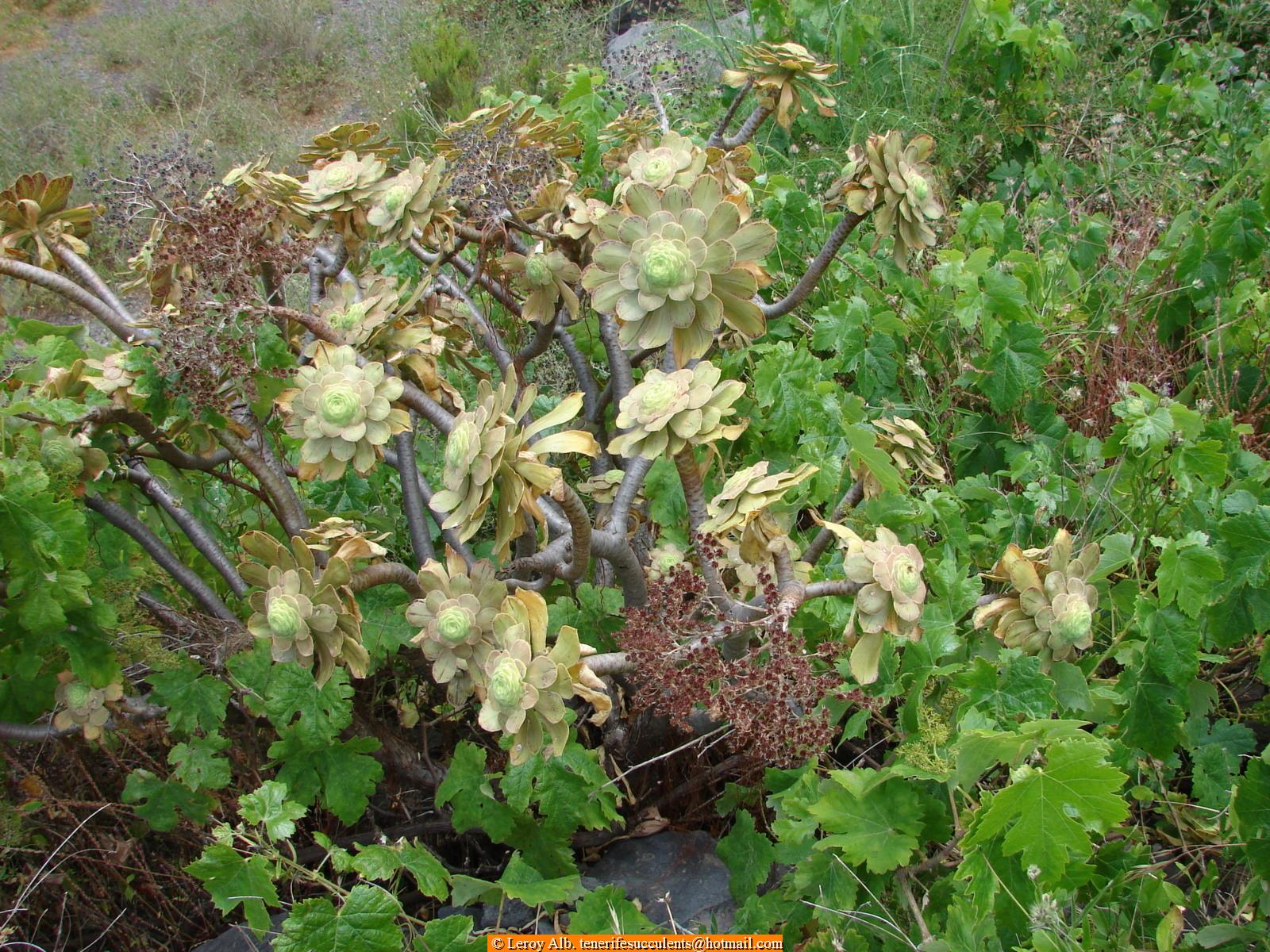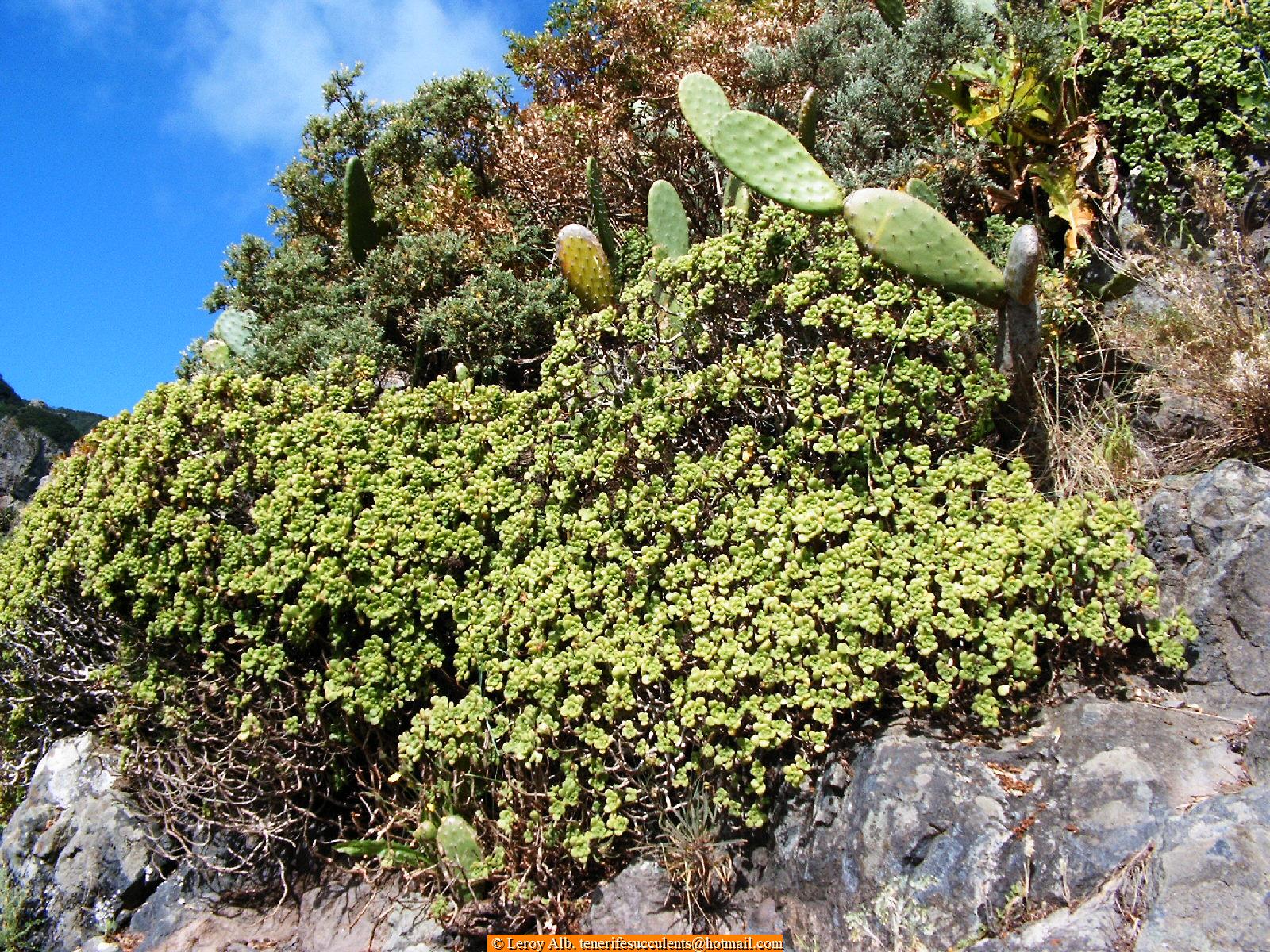Aeonium volkeri Hernandez & Banares 1996
Is a dubious species !! Resembles in many things to the Aeonium mascaense.
Could be a local from of this last species. There where Hern.& Banares give as principal difference "the colour of the petals and the leaves sometimes strongly tinged with red". I will ad a couple pics of the A. mascaense with the same characters .(012-013-014)
Let us see the description given.
Subshrub densely branching up to 40cm high, with slender and rough stems, scaly. Small fleshy leaves in rosettes from 2 to 6 cm in diam., obovate, glabrous, intense green, sometimes strongly tinged with red, notably in period of aridity, with strongly ciliate margins. Inflorescence with whitish pink flowers, in 6 to 9 parts.
Grows between 30 and 450 meter, exceptionally 500-600 m in altitude, on volcanic hillsides and cliffs, in full sun. Locally frequent between San Andres and Igueste de San Andres
In the same region I could find a species resembling a lot the Aeonium haworthii, unfortunately the A.haworthii grows on the total other side of the island, what happens here, have a look to the last pictures (010 & 011) who represents this species??? Do you have an explination. A. haworthii is in the Teno region and this plants grow here above the "Malpais de Candelaria" in totally wild abandoned sites. Do you have an explanation ??? pls contact me.
01 Malpais de Candelaria
one of the 2 sites known by me
02 Aeonium volkeri - Malpais de Candelaria
03 Aeonium volkeri - Malpais de Candelaria
04 Aeonium volkeri - Barranco Balayo
05 Aeonium volkeri - Barranco Balayo
06 Aeonium volkeri - Barranco Balayo
07 Aeonium volkeri - Barranco Balayo
08 Aeonium volkeri - Barranco Balayo
010 Aeonium ?? haworthii - Malpais de Candelaria
011 Aeonium ?? haworthii - Malpais de Candelaria
012 Aeonium mascaense - Teno
013 Aeonium mascaense - Teno
014 Aeonium mascaense - Teno



















































.JPG)


